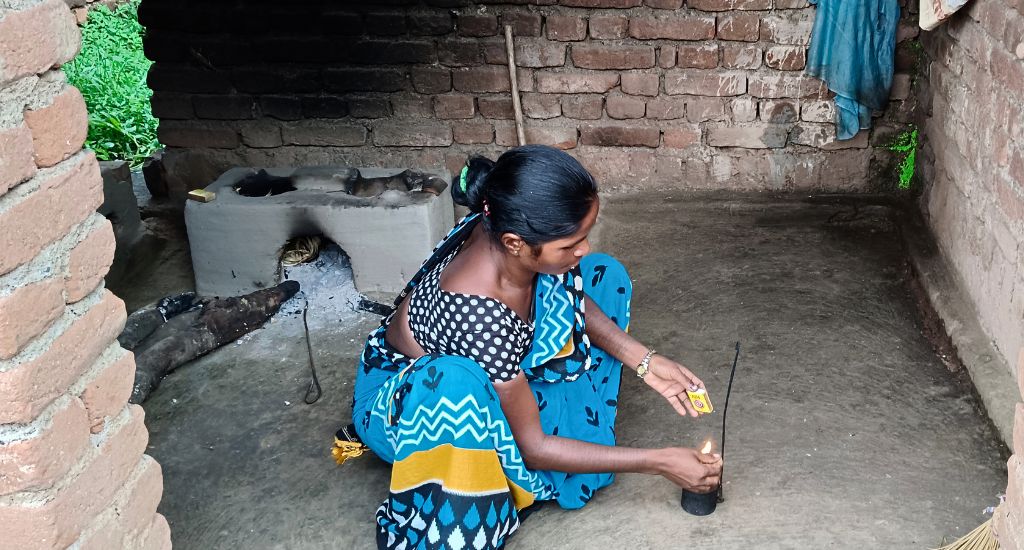
Jharkhand villagers waiting to see ‘light’
Residents of three hamlets in Jharkhand continue to live in darkness as electricity supply is yet to reach them. Lack of hospitals and schools in the vicinity adds to their woes.

Residents of three hamlets in Jharkhand continue to live in darkness as electricity supply is yet to reach them. Lack of hospitals and schools in the vicinity adds to their woes.
As soon as dusk descends, it’s time for Fulmoni Devi to light a lamp. The 35-year-old homemaker lives in Asnapani hamlet in Bokaro district of Jharkhand, around 130 kilometres from Ranchi, the state capital. She cooks her food and does household work with the help of the flickering lamp every evening.
Unlike several other parts of the country, her village doesn’t suffer from power outages or technical glitches in power lines during thunderstorms. The villagers are yet to see ‘light’ even seven decades after Independence.
Asnapani, which has a population of around 50 people, continues to live in an era that is far removed from the present when the country is celebrating its successful soft landing on the moon.
“We have little idea about our country’s latest achievement as there are no televisions in our village because of lack of electricity supply,” said Fulmoni Devi. “The entire village plunges into darkness after evening, with dim lanterns burning in all houses. We virtually live in the stone age with no roads, power or running water.”
Also Read: Jharkhand’s buzzing beekeeping biz
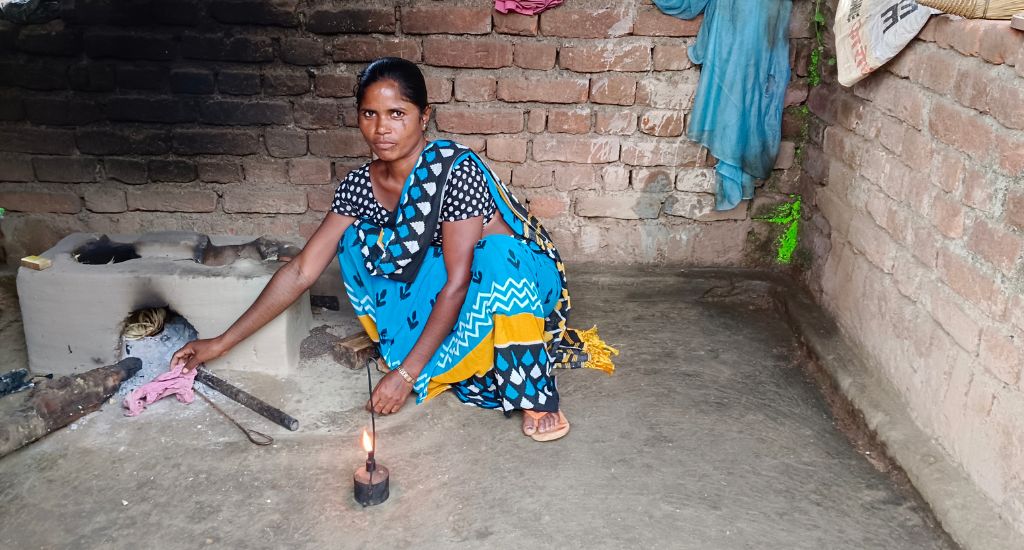
Asnapani is not alone. Two other villages – Kashitand and Birho Dera – located nearby also face the same challenges. The three hamlets collectively have a population of around 300 people. The villages are surrounded by the picturesque Lugu Pahar mountain, which is rich in biodiversity.
People of Kashitand and Birho Dera did think they were lucky when poles were set up and power lines were laid four years ago. But their happiness was short-lived.
“We had a massive celebration when electricity reached our village for the first time in 2019. We thought that our miseries were over and we could also lead a normal life like others,” said Etu Murmu, 23, a resident of Kashitand. “But power went off after two months due to some technical fault, which has not been repaired until now. We continue to live in the dark.”
Besides the lack of electricity, the three villages have no running water supply or even hand pumps and depend on the nearby Bokaro River for water.
Dulari Devi, 50, a resident of Kashitand, said that she takes her toddler grandson along with her to fetch water every day. There is not a single hand pump in all three villages to draw groundwater, she added.
Also Read: Bengaluru boy’s confessions from Jharkhand village
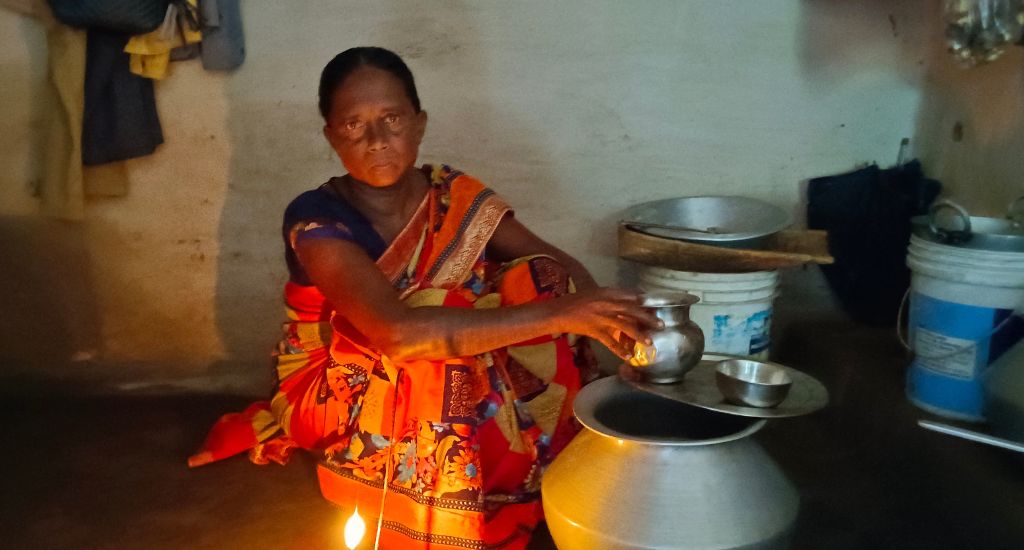
“My daughter-in-law goes to work in the morning. I have to walk downhill on a potholed road surrounded by bushes for about a kilometre to fetch water every day from the river while carrying my grandson in my arms,” she said. “The road is not only full of stones but there’s also the risk of being bitten by venomous snakes. Even wild animals stray into our village after the dark, putting our lives at risk.”
The villagers also complain about the lack of health services and schools. Patients have to be taken on wooden and jute cots to hospitals. Also, the roads connecting the villages are unmotorable and difficult to traverse even on foot.
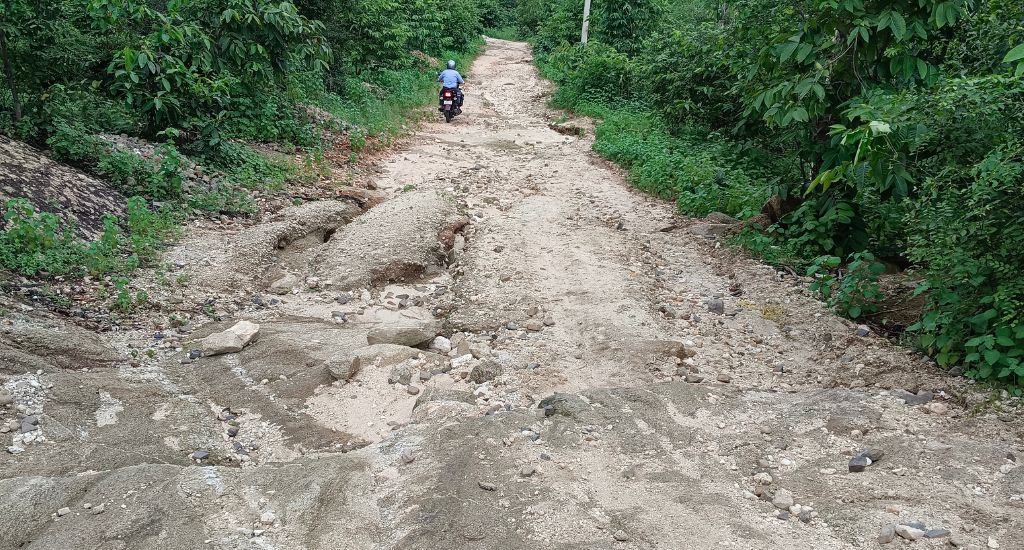
“We don’t have any primary health centre here. Critically ill people and pregnant women face difficulties since the health facilities are located 15 kilometres away,” said Dulari Devi. “The situation turns really grim during the rainy season when the river gets flooded. We have to wait for several hours before taking the risk of crossing the river.”
Aghnu Marandi, 24, who recently burnt his fingers while cooking in the dark, hasn’t been able to see a doctor. “I am using natural medicines from the forest to treat the burns as there are no doctors here,” he said.
Children’s education also suffers because of lack of roads. There is one primary school at Birho Dera that caters to the three villages. Students have to walk at least 5 kilometres to reach the school. Villagers admit that the dropout rate is high as they are unable to send their children for higher classes.
“It is risky to send children far away in this treacherous terrain. Some villagers have sent their children to other places while others have stopped their education. The absence of power also makes it difficult to study at home at night,” said Parvati Devi, 55, a resident of Birho Dera.
Ram Brij Murmu, the head of the Siyari panchayat under whose jurisdiction the villages are located, said that he had complained several times to the higher authorities about electricity and the other problems that the villagers face. But nothing has been done so far.
Also Read: Jharkhand woman turns entrepreneur making bamboo handicrafts
“We have raised the matter many times before the officials concerned but they have not taken any action yet. We are planning to organise a massive protest outside the government offices if nothing is done soon,” said Murmu.
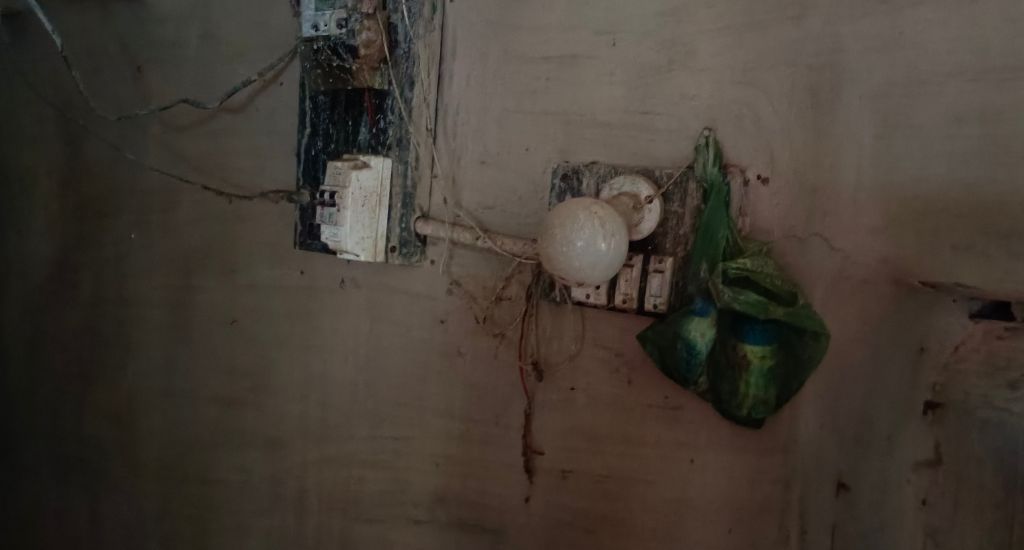
Kapil Kumar, the block development officer, admitted that the villagers are facing several issues and said that the administration would soon address them.
“We know that there is a huge connectivity and power issue in the villages. We are already discussing it with higher officials and work on road construction would start soon,” said Kumar.
The lead image at the top shows Fulmoni Devi lighting a lamp in her house at Asnapani hamlet in Bokaro district of Jharkhand. (Photo by Gurvinder Singh)
Gurvinder Singh is a journalist based in Kolkata.